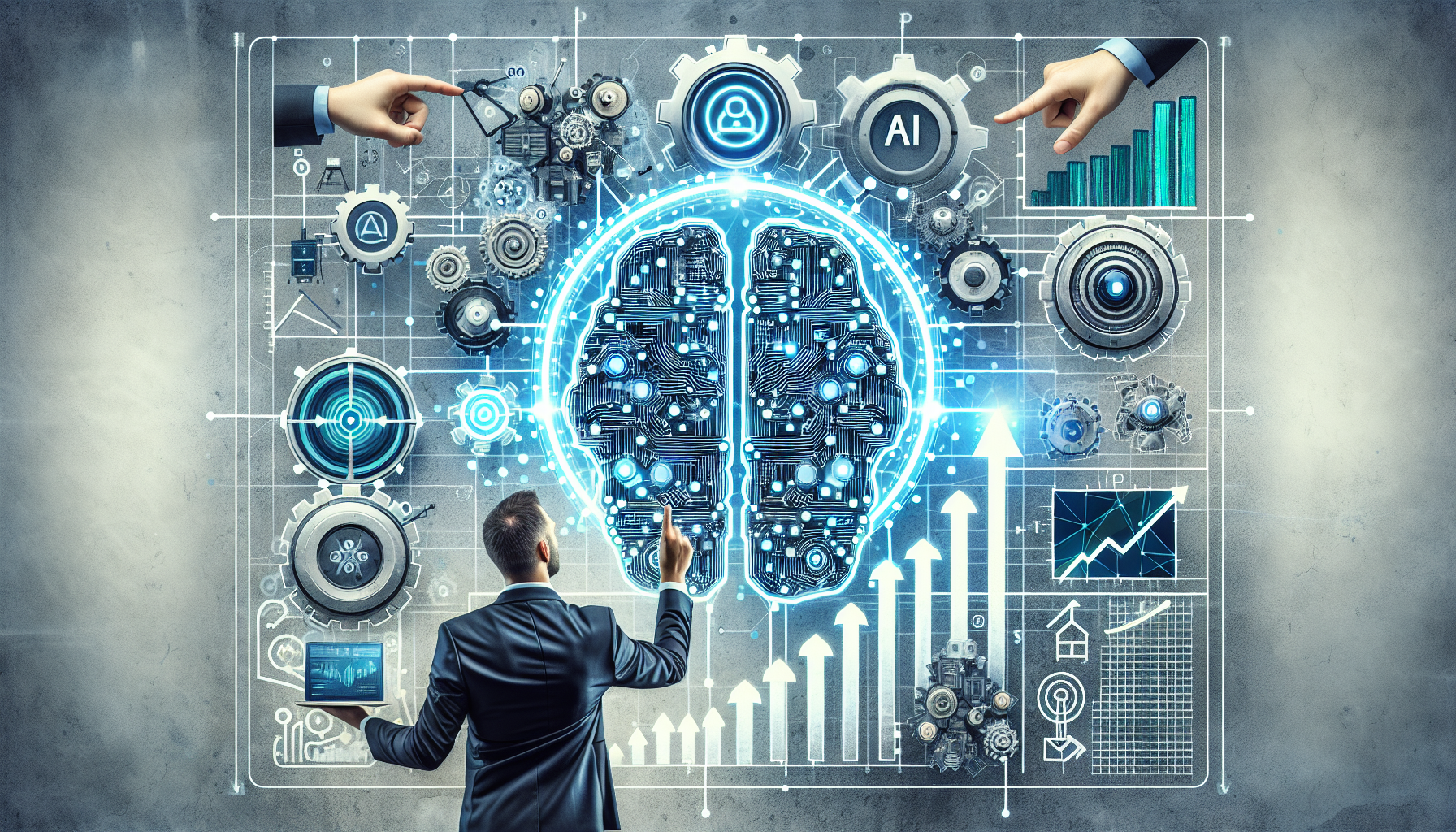AI-Driven Transformation: Harnessing Technology to Align with Business Goals
Understanding AI-Driven Transformation
AI-driven transformation refers to the integration of artificial intelligence into business processes, systems, and strategies to optimize performance, enhance customer experiences, and achieve strategic objectives. This transformation leverages machine learning, data analytics, and automation to align closely with business goals, ultimately fostering innovation and increasing competitiveness.
Key Components of AI-Driven Transformation
-
Data Utilization
Organizations are wealthier in data than ever before, but deriving actionable insights from that data is crucial. Effective AI solutions emphasize data analysis, turning raw data into insightful information. By employing big data analytics, businesses can uncover trends, manage risks, and predict future outcomes, allowing them to tailor strategies that align with their specific objectives. -
Machine Learning and Predictive Analytics
Machine learning algorithms analyze vast data sets, identifying patterns and predicting outcomes. For businesses, implementing these algorithms can lead to enhanced decision-making capabilities. Predictive analytics can improve supply chain management, customer relationship management (CRM) processes, and marketing strategies, ensuring that resources align with business goals. -
Automation and Workflow Optimization
AI technologies underpin automation solutions that streamline repetitive tasks, thereby boosting productivity. Robotic Process Automation (RPA) can handle time-consuming tasks, freeing employees to focus on strategic initiatives. Workflow optimization using AI tools helps in reducing operational costs while improving efficiency, which directly aligns with business goals of maximizing output while minimizing expenditure. -
Customer Experience Enhancement
AI tools like chatbots and recommendation engines revolutionize customer interactions by providing personalized experiences. By analyzing customer data and behavior, businesses can tailor their offerings to meet specific needs, increasing satisfaction and loyalty. Enhancing customer experience not only boosts revenue but also strengthens brand reputation, aligning with overall business goals. -
Strategic Alignment
Each AI solution must align with broader business objectives. Companies need to define clear goals to which AI applications can contribute. By identifying key performance indicators (KPIs), organizations can evaluate the impact of AI initiatives, ensuring that technology investments yield measurable returns.
Real-World Applications of AI-Driven Transformation
-
Healthcare
In healthcare, AI is revolutionizing diagnostics and patient care. Machine learning algorithms analyze medical data, assisting doctors in identifying diseases early on. AI-driven telemedicine platforms provide personalized health recommendations and improve patient management, promoting alignment with healthcare providers’ goals of improving patient outcomes and reducing costs. -
Retail
Retailers harness AI-driven insights to optimize inventory management and enhance customer experiences. Predictive analytics help manage stock levels based on consumer trends, while AI-driven marketing tools deliver personalized content. This alignment with business goals fosters increased sales and customer retention. -
Finance
The financial industry employs AI to enhance fraud detection and risk management. Machine learning models can identify suspicious activity in real-time, safeguarding organizations while complying with regulatory demands. By employing AI-driven financial advisories, institutions can align their services with customer expectations, increasing trust and retention. -
Manufacturing
Predictive maintenance powered by AI reduces downtime and saves costs in manufacturing. By analyzing machinery data, businesses can predict equipment failures before they occur. This proactive approach not only enhances operational efficiency but also aligns closely with goals of increasing production capacity and minimizing unplanned outages.
Steps for Successful AI Integration
-
Assessment and Strategy Development
Begin with a thorough assessment of current processes and technologies. Identify areas where AI can create the most significant impact. Develop a strategic plan that aligns AI initiatives with business objectives. -
Stakeholder Engagement
It is crucial to involve key stakeholders in the AI transformation process. Engagement from leadership, IT, and end-users fosters a culture of acceptance and ensures alignment across departments. -
Pilot Programs
Implement pilot projects to test AI applications in non-critical areas. This helps in assessing effectiveness, rectifying potential issues, and gathering insights before wider deployment. -
Continuous Learning and Adjustment
The AI landscape is constantly evolving; thus, businesses must remain adaptable. Continuous learning about technological advancements and feedback from AI initiatives should guide adjustments to strategies and implementations. -
Focus on Ethical AI Use
The use of AI comes with ethical considerations, particularly concerning data privacy and bias. Organizations must prioritize transparency and accountability in AI deployments, ensuring that their applications align not just with business goals but also with societal and ethical standards.
Challenges in AI-Driven Transformation
-
Data Privacy Concerns
As businesses collect and analyze massive amounts of personal data, compliance with data protection regulations such as GDPR becomes paramount. Failure to handle data responsibly can lead to legal repercussions and damage brand credibility. -
Skill Gaps
The shortage of professionals skilled in AI technologies can hinder transformation. Organizations must invest in training existing employees or hire skilled talent, ensuring they have the capabilities to leverage AI effectively. -
Integration with Legacy Systems
Many organizations operate on legacy systems that may not be compatible with new AI technologies. Overcoming these technological barriers requires strategic planning and often substantial investment in infrastructure. -
Change Resistance
Employees may resist transitioning to AI-driven processes due to fear of job loss or lack of familiarity with new technologies. Addressing these concerns through education and illustrating the benefits of AI can mitigate resistance. -
Scalability Issues
Not all AI implementations yield immediate results or scalability. Organizations must develop robust frameworks that can scale AI solutions effectively, ensuring that they can adapt to growing demands as operations expand.
Future of AI in Business Transformation
As AI technology continues to evolve, its applications in business will only grow. Organizations that embrace AI-driven transformation will not only gain an edge in their respective sectors but also cultivate resilience in an unpredictable landscape. Going forward, the integration of AI with other emerging technologies like blockchain and the Internet of Things (IoT) will offer even more profound opportunities for efficiency, innovation, and alignment with business goals. By prioritizing ethical considerations and fostering a culture of adaptability, companies can effectively harness AI’s potential for a future that thrives on technological advancement.


